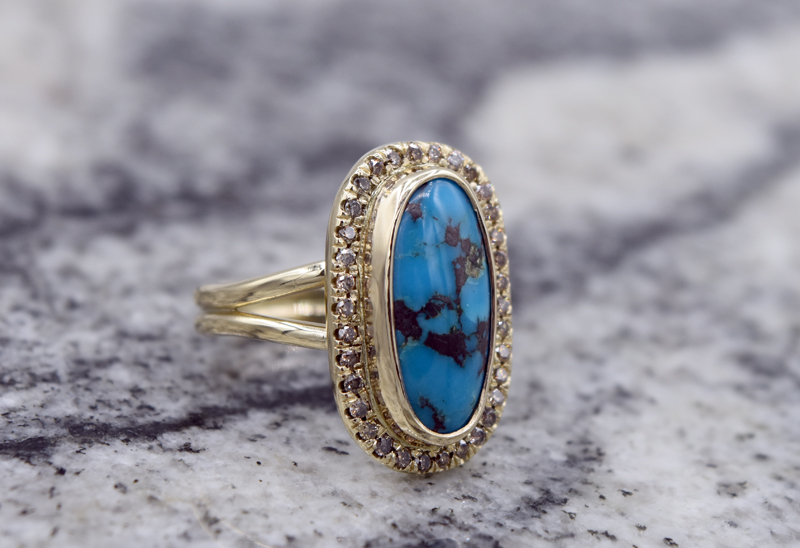Introduction to Fine Jewelry
Fine jewelry is more than just an accessory—it’s a treasured possession that deserves the highest level of care to ensure a lifetime of enjoyment and beauty.
Whether you need a ring resized, a family heirloom restored, or a special piece repaired, these skilled jewelers understand the importance of your jewelry to you. Their expert teams offer a comprehensive range of jewelry services, from watch maintenance to the repair of bracelets, necklaces, and other fine jewelry pieces. With years of experience and a commitment to excellence, they use the latest techniques and equipment to ensure every repair is handled with precision and care.
Austin residents trust these jewelers for their reliability, attention to detail, and exceptional customer service. No matter the type of jewelry—be it gold, silver, or adorned with precious stones—you can be confident that your items are in the hands of professionals who genuinely care. If you’re looking for jewelry repair services in Austin, TX, don’t hesitate to contact these reputable shops today. They are ready to provide estimates, answer your questions, and help you maintain the beauty and integrity of your fine jewelry for years to come.
By choosing these trusted Austin jewelers, you ensure that every piece, from everyday favorites to priceless family heirlooms, receives the expert care and attention it deserves. Let them help you enjoy your jewelry for a lifetime—reach out today to experience the difference that true craftsmanship and service can make.
What We Offer
We welcome you to explore a full range of professional services, including:
💍 Top Austin Jewelry Buyers
We buy a wide variety of fine jewelry, including:
- Gold, silver, and platinum pieces
- Loose and set diamonds
- Luxury watches and designer brands
- Estate and antique jewelry
Our process is secure, discreet, and transparent. You’ll receive a fair market offer from experienced buyers, not automated systems. Walk away with confidence—and immediate payment.


📑 Professional Jewelry Appraisals
Do you need to know what your jewelry is worth? Our GIA-trained jewelry appraisers provide certified, detailed reports for:
- Insurance coverage
- Estate valuation
- Divorce settlements
- Resale documentation
During appraisals, the weight of your jewelry is carefully measured and considered as a key factor in determining its value and authenticity.
We offer both verbal assessments and written appraisals—right here in Austin, with no need to ship your valuables.
🖋️ Custom Jewelry Design
Bring your vision to life with our bespoke jewelry services. We’ll guide you through:
- Designing custom engagement rings
- Repurposing heirloom stones
- Matching existing sets
- Sketch-to-stone custom builds
With our custom design process, you can add unique features or personal touches to your jewelry, making each piece truly your own.
From timeless classics to modern artistry, we bring your ideas to life with precision and passion.


Expert Jewelry Repair & Restoration
Revitalize your cherished pieces with our in-house repair team, led by an expert jeweler. Services include:
- Ring resizing
- Chain, necklace, and clasp repair
- Gemstone resetting
- Cleaning and polishing
- Restoration of antique pieces
No job is too small or too intricate—walk-ins welcome. Receive a free quote or estimate on-site after an in-person inspection by our jeweler.
🕰️ Vintage Jewelry Buyers in Austin
Vintage jewelry captures the charm and style of past decades, offering unique pieces that tell a story. At Abercrombie Jewelry, we specialize in both buying and selling vintage jewelry, with a strong focus on acquiring exceptional pieces from our clients in Austin. If you have vintage jewelry you’d like to sell, our expert team provides fair, transparent offers based on thorough evaluations, ensuring you receive the best value for your treasured items.
Our vintage collection features carefully selected designs from the mid-20th century, perfect for those who appreciate timeless elegance with a touch of nostalgia. Each piece is inspected and restored by our skilled jewelers to ensure it’s ready to wear and enjoy. Whether you’re looking to sell or shop vintage jewelry, Abercrombie Jewelry is your trusted partner for all things vintage in Austin.
🏛️ Austin Estate Jewelry Buyers
Each estate jewelry item tells a story, and at Abercrombie Jewelry, we’re passionate about helping you continue that story. We specialize in both buying and selling estate jewelry in Austin, with a strong focus on offering fair, transparent, and expert evaluations to those looking to sell their cherished pieces.
If you have estate jewelry to sell, our experienced team provides trusted appraisals and competitive offers, ensuring you receive the best value for your fine jewelry. Whether it’s a family heirloom, a unique ring, or a special bracelet, we handle every transaction with care and professionalism.
For buyers, our estate collection features a diverse range of previously owned fine jewelry, each piece rich with history and character. From classic rings to exquisite necklaces and bracelets, these items come with the assurance of quality and authenticity, backed by Abercrombie Jewelry’s expert maintenance and appraisal services.
🏺 Antique Jewelry Buyers
Looking for something truly timeless? At Abercrombie Jewelry, we specialize in both buying and selling exquisite antique jewelry, offering a trusted destination for those who appreciate rare craftsmanship and historic beauty.
If you’re looking to sell antique jewelry, our expert team provides fair and transparent evaluations, along with competitive offers, for pieces spanning various historic periods and classic styles. We understand the unique value of these heirlooms—whether it’s a delicate Edwardian brooch or an intricate Art Deco engagement ring—and work diligently to ensure you receive the best price for your treasured items.
For buyers, our carefully curated antique jewelry collection features rare and often one-of-a-kind pieces that date back over 100 years. We take pride in preserving and restoring these special items, helping you carry forward a legacy of beauty and tradition with every purchase.
🔄 Jewelry Consignment Services
Want to sell but not in a rush? Let us showcase your jewelry in our elegant showroom, where it will be displayed with the utmost care and attention to attract the perfect buyer. We offer fair consignment terms tailored to your needs, ensuring you receive competitive value for your pieces. Our expert marketing team works diligently to promote your jewelry through multiple channels, reaching a broad audience of enthusiastic buyers. With transparent communication and regular updates, we keep you informed every step of the way, ensuring a smooth and stress-free consignment process. Trust us to help your treasured jewelry find a new home while you enjoy peace of mind and the best possible return.
Why Austin Chooses Abercrombie Jewelry
We’re not just another jewelry shop—we’re a trusted name in the Austin community.
✅ Over 20 years of local experience
✅ Central showroom near Downtown Austin
✅ 5-star reviews and loyal clientele
✅ Personalized service from real experts
✅ Fair offers and no-pressure evaluations

Proudly Serving Austin’s Diverse Neighborhoods
We love Austin for its creativity, diversity, and character—and we’re honored to work with clients across the metro area. Whether you live nearby or are just visiting, we’re here for you.
We serve neighborhoods including:
- Central: Hyde Park, Tarrytown, Rosedale, Clarksville
- East: East Cesar Chavez, Govalle, Mueller
- South: Zilker, Barton Hills, Travis Heights
- North: Brentwood, Allandale, Crestview
- West & Northwest: West Lake Hills, Rollingwood, Steiner Ranch, Great Hills
Easy Access from Austin Landmarks
You’ll find us just minutes from many of Austin’s best-known destinations:
- University of Texas at Austin
- Lady Bird Lake Trail
- Zilker Park & Barton Springs
- Texas State Capitol
- South Congress
- The Domain
- Austin-Bergstrom International Airport
Whether you’re grabbing brunch on South Lamar or visiting from out of town, our central location makes it easy to stop by.
Visit Abercrombie Jewelry Today
Abercrombie Jewelry
3008 Bee Caves Rd #100
Austin, TX 78746, United States
(512) 328-7530
Open Monday-Thursday 10:00 AM – 5:30 PM
Friday 10:00 AM – 5:00 PM
Walk-ins welcome, appointments encouraged
Let us help you find—or part with—a piece worth remembering.

Helpful Reads You Might Like
- Estate Jewelry vs. Vintage Jewelry →
- How to Sell Gold in Austin →
- Best Time to Buy an Engagement Ring →
- Do Diamond Rings Hold Value? →
